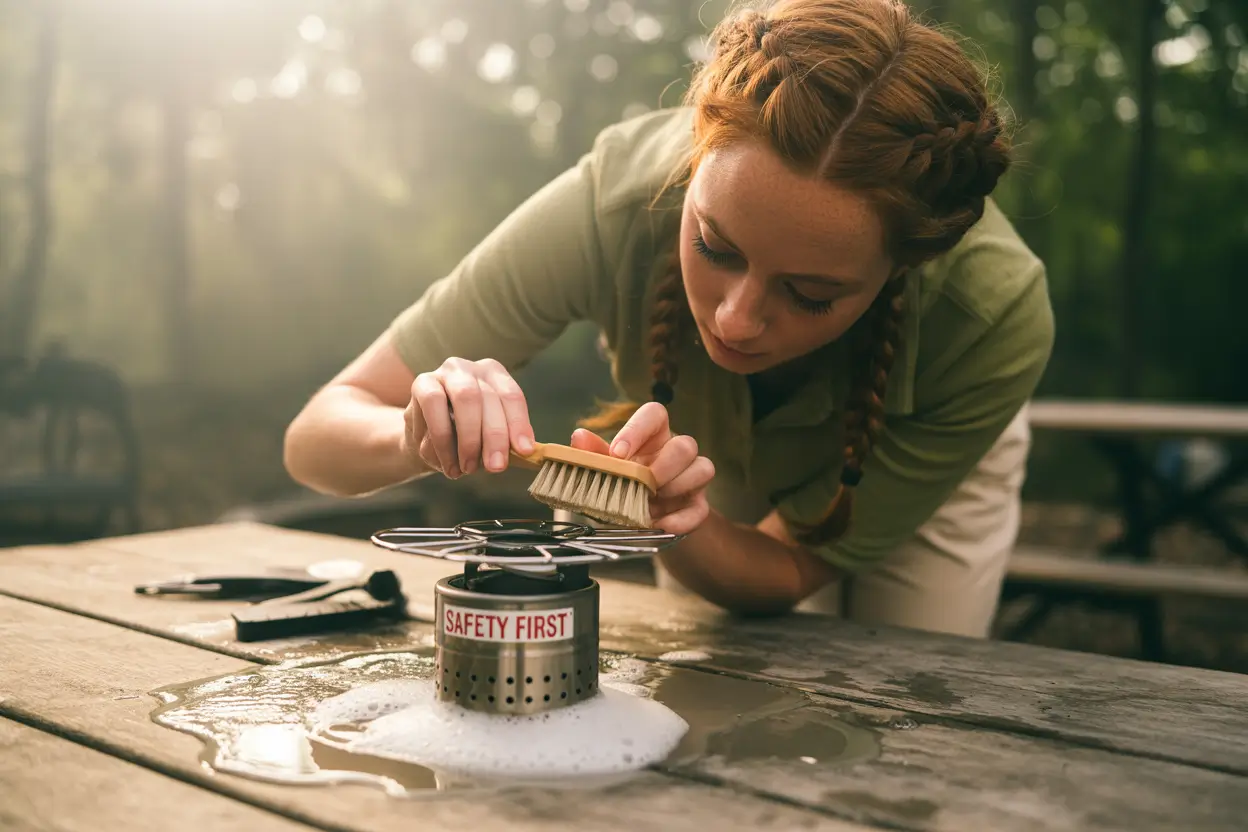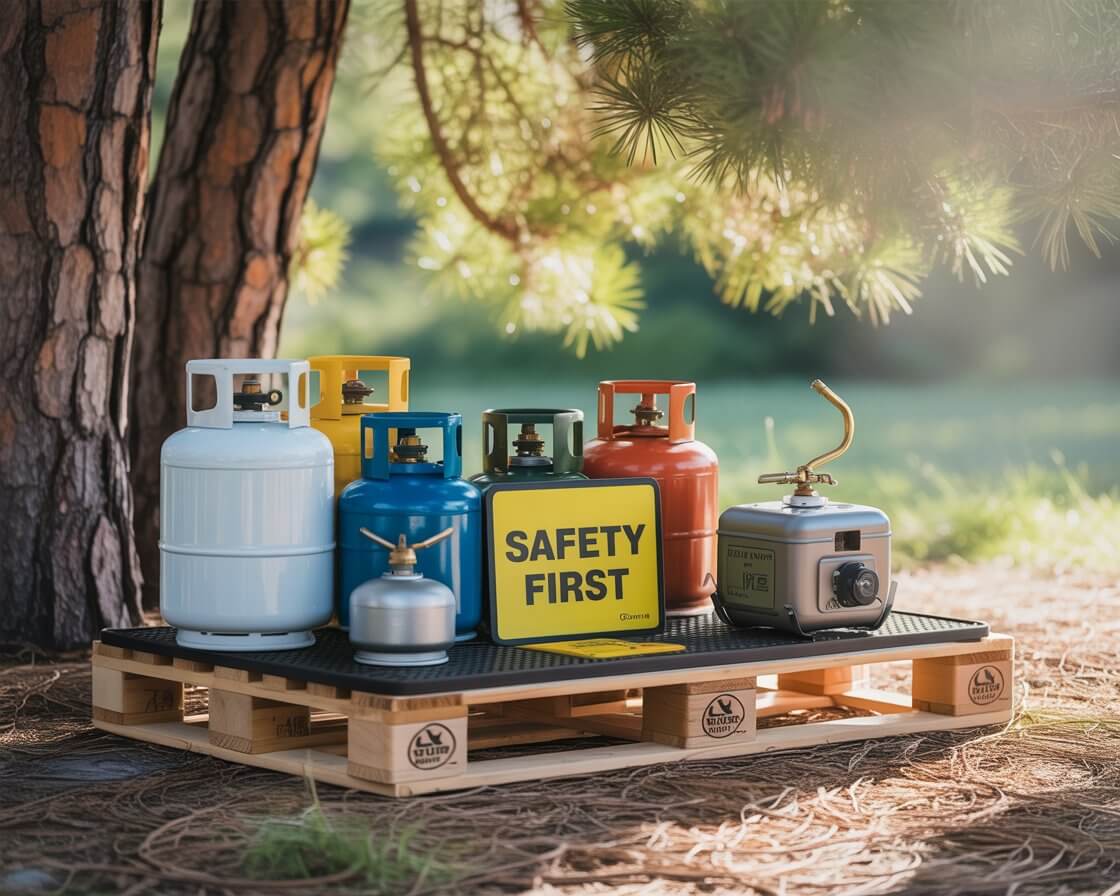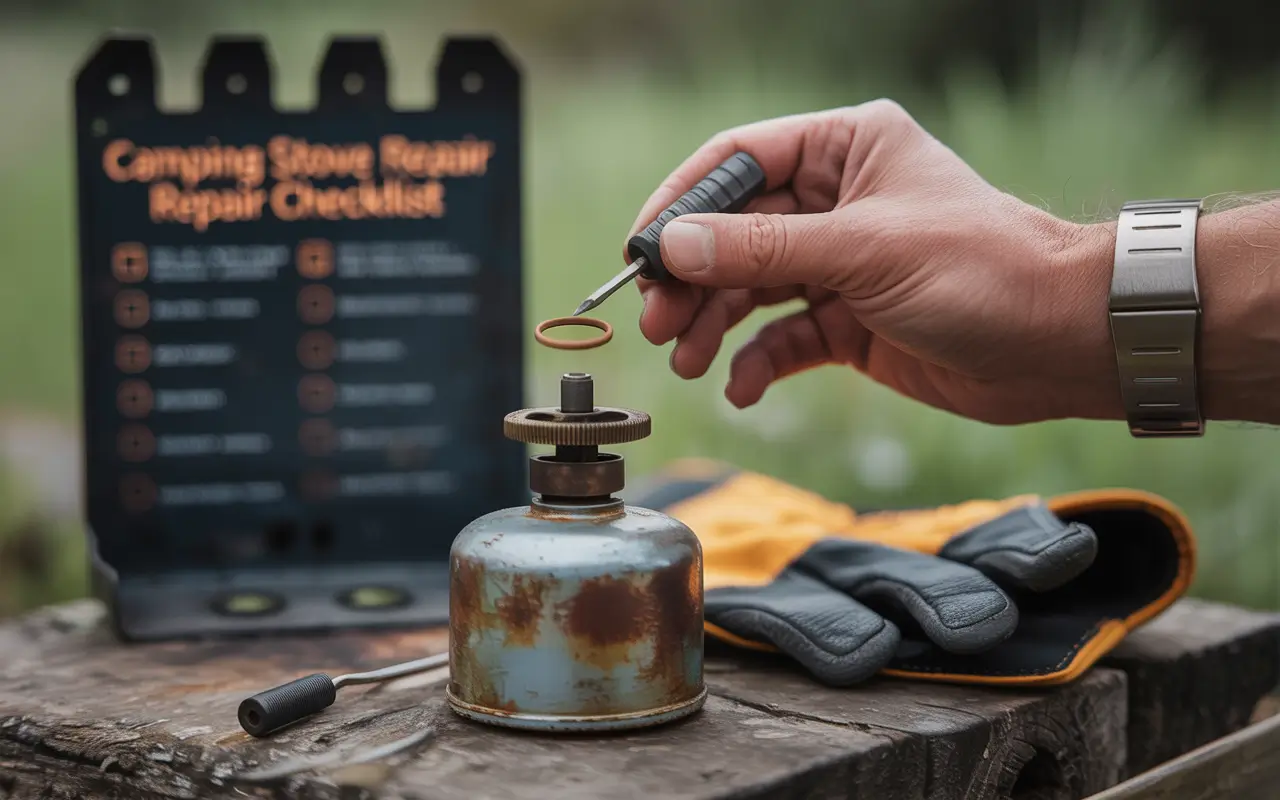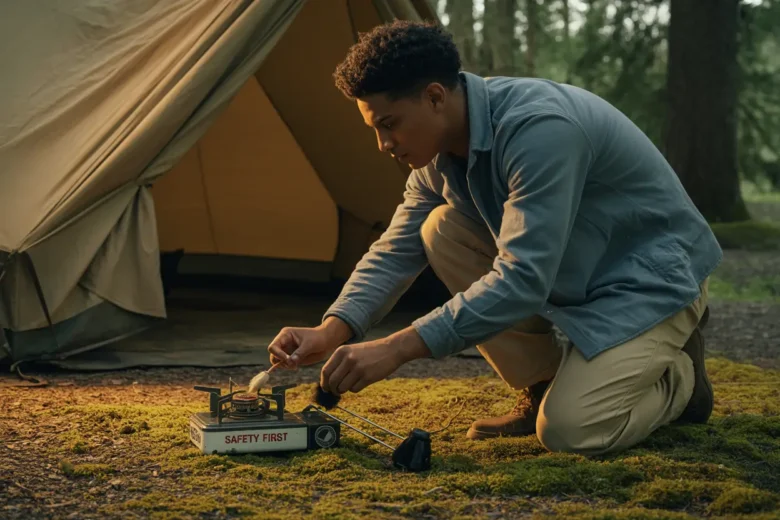A reliable camping stove is essential for cooking up great meals in the wild, but it requires proper care to keep it running safely and efficiently. In this camping stove care guide, we’ll walk you through everything you need to know—from how to clean a camping stove to storing a camping stove properly after your trip. Whether you’re new to outdoor cooking or a seasoned adventurer, these camping stove cleaning tips and portable stove maintenance practices will help extend the life of your camping stove portable unit and ensure it’s always ready for your next outdoor adventure.
Why Camping Stove Maintenance Matters

Taking care of your camping stove isn’t just a good habit—it’s essential for safety, efficiency, and long-term performance. Whether you use a gas stove, wood-burning stove, or a multi-fuel camping stove, regular maintenance ensures your gear stays reliable no matter where your adventures take you.
🔧 Extend the Life of Your Stove
Routine camping stove maintenance helps prevent corrosion, clogged fuel lines, and general wear and tear. With the right portable stove maintenance, your gear can last for many seasons, saving you money and reducing waste. This applies to all types of stoves—gas, wood, or multi-fuel—each of which benefits from proper care.
🔥 Improve Fuel Efficiency and Performance
A clean, well-maintained stove burns fuel more efficiently. Dirty burners and blocked jets can reduce flame output and increase fuel consumption. Knowing how to clean a camping stove properly ensures it performs at its best every time, helping you cook faster and use less fuel on the trail.
🧯 Prevent Safety Hazards
Neglecting camping stove safety can lead to serious risks, including gas leaks, unexpected flare-ups, or even carbon monoxide buildup in enclosed areas. Regular checks for worn-out seals, cracks in fuel lines, and debris buildup are critical parts of any gas stove maintenance routine. Staying proactive helps keep you and your fellow campers safe.
🏕️ Prepare Your Gear for All Weather
Seasonal changes bring new challenges. Learning how to store a camping stove properly, especially for long-term or winter storage for camp stoves, helps prevent rust, freezing damage, or clogging from leftover fuel residues. Proper storage ensures your stove is ready to go when you are—no matter the season.
How to Clean Your Camping Stove the Right Way
Keeping your camping stove clean is essential for safety, performance, and longevity. Whether you’re using a compact MSR, a reliable Coleman, or a high-efficiency Jetboil, regular cleaning ensures your stove runs smoothly and safely every time.
🧽 Disassembling Parts Safely
Start by making sure your stove is completely cool and disconnected from any fuel source. Then, carefully disassemble removable components like the stove burner, fuel lines, and regulators. Refer to your manufacturer’s guide to avoid damaging any parts—especially delicate pieces like the fuel valve.
🧼 Cleaning Tools and Products
Use a soft brush or toothbrush to scrub away grime and cleaning soot from the burner ports. A mixture of warm water and vinegar works well for removing buildup without damaging the metal. For grease, a mild stove cleaner or degreaser that’s safe for outdoor gear is ideal. Always dry each part completely before reassembling.
❌ What Not to Use
Avoid using abrasive pads or harsh chemicals, especially on components like the fuel valve or seals, as these can cause damage or compromise safety. Never submerge the fuel line or regulator in water—wipe these with a damp cloth instead.
🔁 How Often to Clean
Perform a light cleaning after every trip to prevent residue buildup and spot potential issues early. Plan for a seasonal deep clean—especially if your stove has been used heavily or stored for a while. This is especially important if you’re planning to use your stove in colder conditions, where performance can be impacted by even minor clogs.
🔗 Need a new stove or thinking about upgrading? Check out The Best Camping Stoves in 2025: Cook Anywhere, Anytime for expert recommendations and reviews.
Safe Fuel Handling and Storage Tips

Proper fuel handling is a critical part of camping stove safety. Whether you’re using propane, butane, or a dual-fuel stove, understanding how to store and transport your fuel safely helps prevent accidents and keeps your gear performing reliably.
⛽ How to Store Propane, Butane, or Dual Fuel Safely
Always store fuel canisters upright, in a cool, well-ventilated area away from direct sunlight, heat sources, or open flames. For propane stove safety, never leave canisters inside a hot vehicle or near flammable gear. If you’re storing liquid fuel, such as white gas, make sure it’s in a sealed, clearly labeled container away from food or water supplies.
💨 Avoiding Leaks, Pressure Buildup, or Combustion Risks
Before each use, inspect the gas regulator, pressure valve, and fuel lines for signs of wear or damage. A simple bubble test with soapy water can help detect fuel leaks—never use a flame to check for leaks. Tighten all connections carefully, and never force threads or valves.
🧊 Cold-Weather Storage vs. Hot Climate Storage
Cold-weather storage may cause canisters to lose pressure, affecting stove performance. Store them off the ground and insulated from freezing temperatures if possible. In contrast, hot climate storage can lead to dangerous pressure buildup—ventilate well and avoid storing fuel in closed spaces like cars or sheds.
🛑 Fuel Canister Safety Warnings and Expiration
Always check fuel canisters for expiration dates, rust, or bulging. Damaged or expired canisters should never be used. Follow manufacturer warnings, and never attempt to refill disposable canisters. Dispose of old fuel responsibly according to local hazardous waste guidelines.
🛠️ A little care goes a long way. Practicing fuel storage safety and routine checks can prevent serious risks and extend the life of both your stove and your fuel system.
Proper Storage Techniques After Use
After your camping trip ends, storing your stove the right way is just as important as using it safely. Whether you’re packing up a wood stove, gas stove, or multi-fuel unit, these portable stove care tips will help extend your gear’s lifespan and keep it ready for the next adventure.
🎒 Clean and Dry Your Stove Before Packing
Before storing, always clean your stove thoroughly and let it dry completely. Moisture left on components—especially inside fuel lines or under burners—can lead to rust or corrosion. If you’re wondering how to store a camping stove, the first rule is: never pack it away dirty or wet.
📦 Best Storage Bags and Containers
Use a dedicated stove pouch, storage bag, or hard-sided container to protect your stove from bumps and environmental damage. A fireproof mat can also be stored with the stove to protect surfaces during future use. Keeping all components together—including fuel regulators and accessories—makes setup easier next time.
🪵 Special Storage for Wood-Burning Stoves
For wood-burning stoves, remove any leftover ash or soot before storing. Ash can retain moisture and cause corrosion over time. Make sure there’s some airflow around the stove if it’s stored long-term—especially in colder months. This step is key for winter stove storage.
🌡️ Where to Store in the Off-Season
Choose a cool, dry location such as a garage, shed, or climate-controlled box for long-term storage. Avoid places with extreme temperature swings, high humidity, or risk of rodents. If storing indoors, make sure fuel is removed and stored separately.
🧭 With the right storage habits, your stove stays protected and ready to perform—whether you’re hitting the trail next weekend or next season.
Troubleshooting and Maintenance Checklist

Even the most reliable camping stoves can run into issues over time. Knowing how to troubleshoot common problems and perform basic repairs will save you time and frustration in the field. This quick guide covers essential camping stove repair tips to keep your gear in top condition.
🔥 Stove Won’t Ignite?
If your stove isn’t lighting, start by checking the ignition valve, Jetboil igniter, or the gas pressure. Ensure the fuel canister is properly attached, full, and that the valve is open. If the igniter clicks but there’s no spark, it may be time to clean or replace it.
🧯 Unusual Flame Color or Smell
A yellow flame or strong fuel smell often signals a gas leak, clogged burner, or debris inside the fuel line. Shut off the stove immediately and inspect all connections. Use soapy water to test for leaks—bubbles indicate escaping gas. These are vital stove troubleshooting tips to ensure safety.
🧰 When to Replace Parts
Inspect components like O-rings, gaskets, and burners regularly for cracks, stiffness, or corrosion. Damaged parts should be replaced promptly to prevent fuel leaks and performance issues. Keep a small repair kit on hand with spare parts for your specific stove model.
✅ Printable Maintenance Checklist
To make routine upkeep easier, download our camping stove maintenance checklist to track cleanings, inspections, and seasonal prep.
🔗 For more in-depth repair advice, visit REI’s Stove Maintenance & Repair Guide for expert tutorials and part replacement guides.

